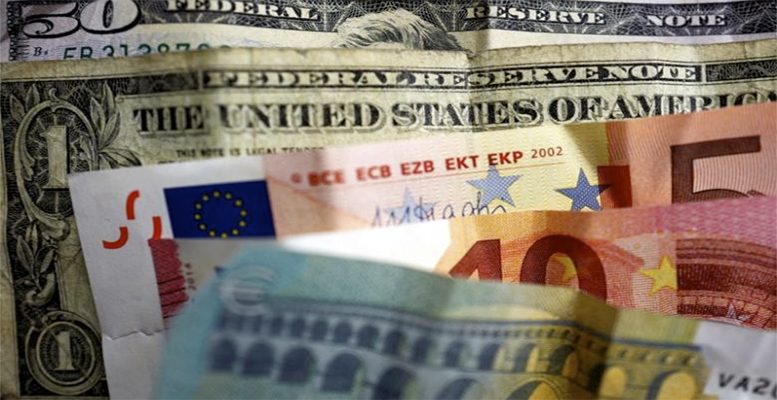The graphic below shows 10-year interest rates in the US and Germany (representing the euro, as we don’t have a series for the euro).
See how after twenty years of similarity, as if they could only be apart for a short time, for the last six years there has been a growing decoupling of the US rate, reaching a spread of 2%. So what are the macroeconomic differences justifying such behaviour? As we can see in the next graphic, it’s not prices, as over the last few years the CPI rates have converged in both countries
Therefore, in Germany there is a real negative interest rate and one which is definitely lower than in the US.
The only thing which can explain this is a notable difference in the savings rate in favour of Europe. This is obvious and can be shown by a comparison of the balance of payments in both regions, which are not measuring the size of internal demand, and with that, the difference in savings.
The Balance of Payments/GDP of the Eurozone is more stable and is in positive territory, whereas that of the US, although it has improved its deficit, is in negative territory, and it appears that the gap opens up. It should be said that behind the surplus in the Eurozone, Germany’s enormous surplus plays a vital part. It’s over 7% of GDP (the biggest in the world, even bigger than China), the other side of coin of its massive savings.
Interest rates contain a very important expectations component, and the marked and increasing differential signals that an increase in internal demand, in the external deficit, is predicted for the US, charged against the public deficit which the new law approved by Trump is expected to generate. An increase in the deficit at the least suitable point in the cycle, with GDP almost definitely above potential. In other words, inflation is almost inevitably going to increase, as the interest rates announce.
Meanwhile in Europe, the excess of savings and the strict discipline imposed by Germany, which is not going to change much, keep interest rate in Germany and in many countries in the euro at real negative rates.
So then it is to be expected that in the three graphics we see a rise in differentials, for macroeconomic reasons, specifically because net savings are going to remain stable in the Eurozone. Meanwhile in the US, the most likely thing is an increase in debt.
Is Germany and the Eurozone’s situation of excess savings economically correct? There is another side of the coin to every positive sign in the savings rate, which is a lower investment in capital than could have been achieved. Here there are two different philosophies, one which priortises investment, whether public (Trump) or private, and another which priortises always keeping something back for the future. What happens is that in Germany, this future now lasts a long time (it’s renewed and strengthened every year), because the net savings which prevent a higher capital rate are increasingly larger, also in the other countries in the region. The comparative lower demand for capital between the two regions can be seen, for example, in the difference in accumulated credit in non-financial sectors (households, companies, the State), as we can see here.
A difference which should be seen in other financial instruments for capturing capital, like equities. (Furthermore, I suspect that the differences in behaviour in the fixed interest markets which Hugo Ferrer talks about can be partly explained by these differences we detect).
The future is in the intertemporal balance between savings and investment. Germany’s attitude can be criticised because it squeezes capital and the ultimate reason is to benefit the euro, both against the dollar and other countries in the euro. The healthy thing is that Germany will be revaluated in comparison with the rest of the world, but without forcing the revaluation of its companions in the euro. But the direction the US is going in is not reassuring either.





